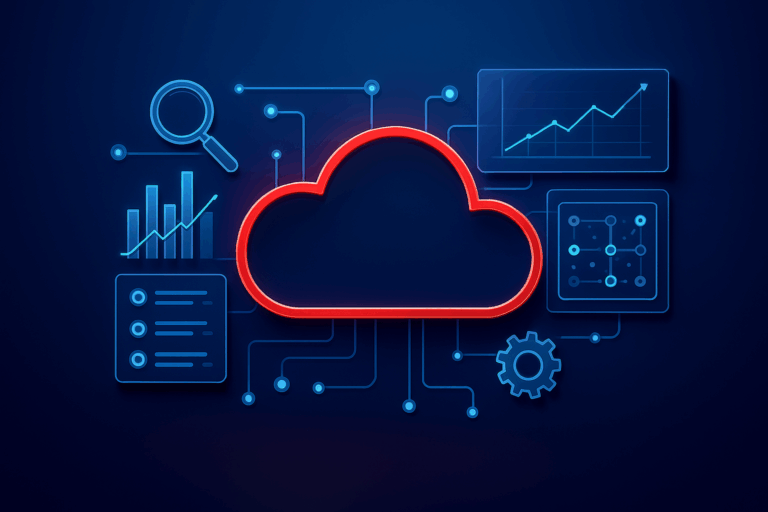As organizations move their financial, procurement, and HR operations to Oracle ERP Cloud, effective monitoring becomes mission-critical. Real-time visibility into application performance, integrations, and user behavior helps ensure compliance, uptime, and operational efficiency.
However, monitoring Oracle ERP Cloud is not without challenges. Enterprises often struggle with data complexity, integration bottlenecks, and user adoption barriers. Understanding these challenges and implementing proactive solutions, can transform monitoring from a reactive necessity into a strategic advantage.
Data Overload: Turning Information into Insight
Modern ERP environments generate massive volumes of logs, metrics, and audit trails. While these data points are invaluable, they can quickly overwhelm IT and compliance teams if not properly managed.
Solution:
Focus on Key Performance Indicators (KPIs) that directly align with your organization’s business objectives, such as transaction performance, integration latency, and access violations.
Leverage data aggregation and filtering mechanisms within your monitoring framework to simplify dashboards and emphasize actionable insights over raw data.
Pro Tip:
Integrate intelligent analytics to automatically flag anomalies rather than manually reviewing thousands of data points.
Integration Complexity: Bridging Data Across Systems
Oracle ERP Cloud often coexists with multiple external systems, including CRM, HRMS, SCM, and legacy databases. Ensuring seamless integration of monitoring tools across these heterogeneous systems can be challenging.
Solution:
Select monitoring solutions that offer native connectors and APIs for Oracle ERP Cloud, allowing cross-system event correlation and unified visibility.
Work closely with your IT and integration teams to establish secure, bi-directional connectivity between ERP modules and external tools.
Pro Tip:
Adopt a platform-based monitoring architecture (such as 1Trooper’s unified risk and access governance platform) to consolidate event monitoring, audit trails, and compliance logs under a single pane of glass.
Real-Time Analysis: From Detection to Prevention
Traditional monitoring solutions rely on historical logs, which delay response times and extend downtime. In a cloud-first environment, delays translate to lost productivity and compliance risks.
Solution:
Invest in real-time analytics and automated alerting tools that notify administrators instantly about deviations, performance dips, or unauthorized access attempts.
Implement AI-driven predictive analytics to anticipate system bottlenecks and potential access anomalies before they affect operations.
Pro Tip:
Integrate 1Trooper’s AI-based risk detection to identify unusual patterns and initiate automated remediation workflows, minimizing the mean time to detect (MTTD) and resolve (MTTR).
User Training: Empowering Teams for Effective Monitoring
Even the best monitoring tools can fall short if users lack proper training or misinterpret analytics dashboards. This often leads to underutilization or false alarms.
Solution:
Establish a structured training program for administrators, auditors, and key business users.
Include real-world simulations, troubleshooting labs, and continuous enablement sessions to enhance confidence and expertise.
Pro Tip:
Develop user guides and “quick insight dashboards” tailored to each department, ensuring that every stakeholder sees what matters most to them.
Security and Compliance: Safeguarding the Monitors Themselves
Ironically, monitoring systems, which protect ERP environments, can become security vulnerabilities if not properly governed. Inadequate controls, outdated patches, or non-compliant configurations can compromise sensitive enterprise data.
Solution:
Select monitoring tools that adhere to industry standards and certifications such as ISO 27001, SOC 2, and GDPR.
Ensure that your monitoring architecture supports role-based access control (RBAC), data encryption in transit and at rest, and audit logging for every system interaction.
Pro Tip:
Perform regular compliance health checks using 1Trooper’s integrated GRC framework to verify that both ERP and monitoring environments align with corporate and regulatory mandates.
The 1Trooper Advantage: Intelligent Monitoring for Oracle ERP Cloud
At 1TRC (1Trooper Risk & Compliance), we simplify Oracle ERP Cloud monitoring through AI-driven automation, identity governance, and continuous compliance analytics.
Our platform provides:
- Unified dashboards for ERP and non-ERP systems
- Real-time anomaly detection powered by machine learning
- Cross-system event correlation for fraud and access risk management
- Automated compliance reporting aligned with SOX, GDPR, and ISO standards
With 1Trooper, organizations can detect threats faster, minimize downtime, and ensure governance across every business process, all from a single, secure platform.
Conclusion: Transform Monitoring Into a Strategic Advantage
Monitoring Oracle ERP Cloud is not just about uptime; it’s about resilience, compliance, and trust.
By addressing data overload, integration complexities, and security risks, enterprises can build a proactive monitoring framework that drives business continuity and confidence.
With 1Trooper, organizations evolve from reactive troubleshooting to intelligent governance, protecting every transaction, user, and system with precision and insight.
Empower your Oracle ERP Cloud with 1Trooper, because visibility is the first step to security.


